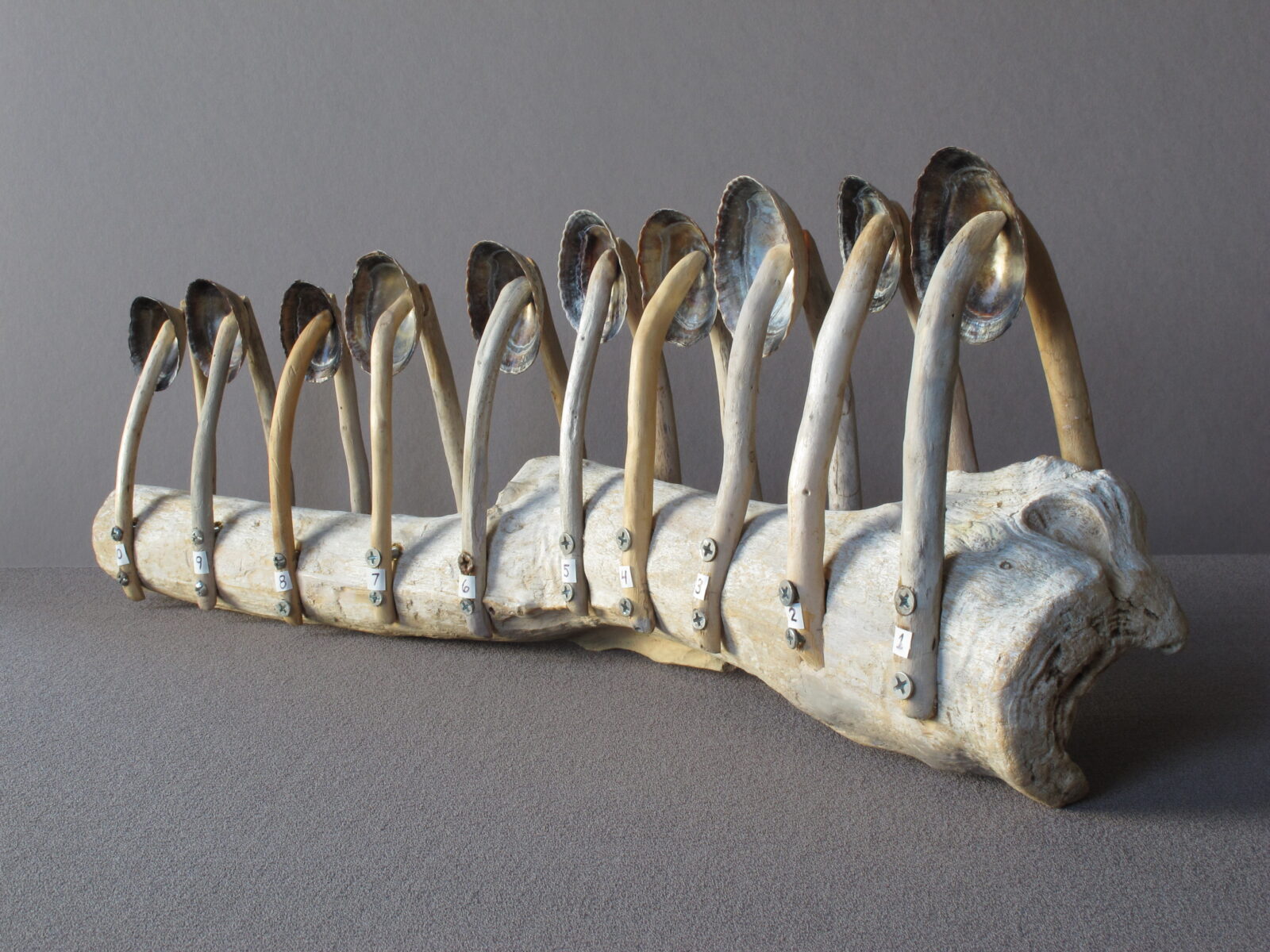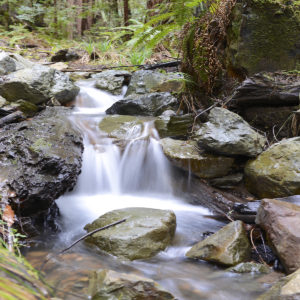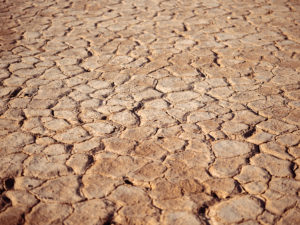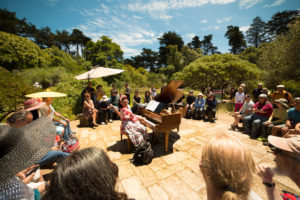Mysterious pulsing sounds run through the entirety of “Frozen Over,” a 21-minute song by San Francisco musician Cheryl E. Leonard. Mixed with the pulses are cracking, whirring, and sounds from unidentifiable instruments. These noises seem to come from something or somewhere specific, but the sources are difficult to identify.
“Frozen Over” is one of three songs on Watershed, Leonard’s 2019 album dedicated to the sounds of California’s aquatic ecosystems. The track reproduces and interprets the sounds of Tenaya Lake in Yosemite National Park, recorded during a rare moment in 2012 when the lake was frozen but clear of snow. We hear the thawing and refreezing of the lake, accompanied by rocks and shells played as instruments, along with Japanese bowl gongs and Nepalese bells.
“Anything can be musical instruments!” Leonard excitedly tells me, in her studio full of animal bones, driftwood, feathers, stones, and homemade instruments, like the one made from 10 Antarctic limpet shells that she plays with a bow. On Watershed, listeners hear the panoply of sounds water makes in its different states—from frozen lakes to crashing waves—but in the studio Leonard asks me to listen as she stacks a couple of stones in different configurations, petting them, brushing them, or dropping objects on them. All produce very distinct sounds when amplified by various types of microphones.

Leonard is a formally trained musician with undergraduate and graduate degrees in music composition, but she says she has long been drawn to “the weirder sounds” since learning about extended technique—a musical term for playing instruments in unconventional ways. She has released seven solo albums of experimental music since 2002, along with a number of collaborations. Two of her albums, Chattermarks: Field Recordings from Palmer Station (2010) and Antarctica: Music from the Ice (2022), resulted from a once-in-a-lifetime grant from the National Science Foundation’s Antarctic Artists and Writers Program, which allowed her to spend five weeks at an Antarctic research station. Leonard’s latest release, Multiple Park (2023), is a collaboration with the musician and composer Wobbly, a member of the long-running Bay Area experimental music group Negativland. In addition to recording, Leonard regularly performs live, often along with other musicians also playing her homemade instruments.
Her ethos of curiosity extends beyond creative instrument-making to an appreciation and concept of music in the widest sense. When Leonard first arrived in San Francisco, she fell in with what she calls the “noise scene,” musicians who incorporate sounds normally considered nonmusical into their compositions and who make instruments from everyday objects. She also began to rediscover a love of hiking and backpacking—and to see the outdoors as a world full of instruments.
Leonard thinks there’s much to learn about a place by listening to it. Chief among these insights is awareness of the interconnectedness of life and nature. “I think that that’s very obvious when you listen to natural sounds,” she says—for instance, the dawn chorus of birds, with different species singing in different frequency ranges or rhythmic patterns. Mary Montague, a poet, nature writer, and ornithologist, calls that a “sonic ecosystem.”
“Every species has a role (or multiple roles) and niches, and they interlock with all the other species,” Leonard notes, “and you can hear that!” But many of us lack the time or circumstances to fully listen and absorb such phenomena. “I’m a person who needs to be doing something all the time,” Leonard acknowledges, especially with the financial and time pressures involved with being an artist. “But if I plug the microphones in, I’m listening, and I’m doing something … It’s been really valuable. And I think it would be for anyone.” She likens her deep listening to a form of meditation and hopes her music similarly helps listeners slow down and pay attention to the atypical music that surrounds us. “The point for me is just to help people understand the interconnectedness of everything.”
—Matthew Harrison Tedford




